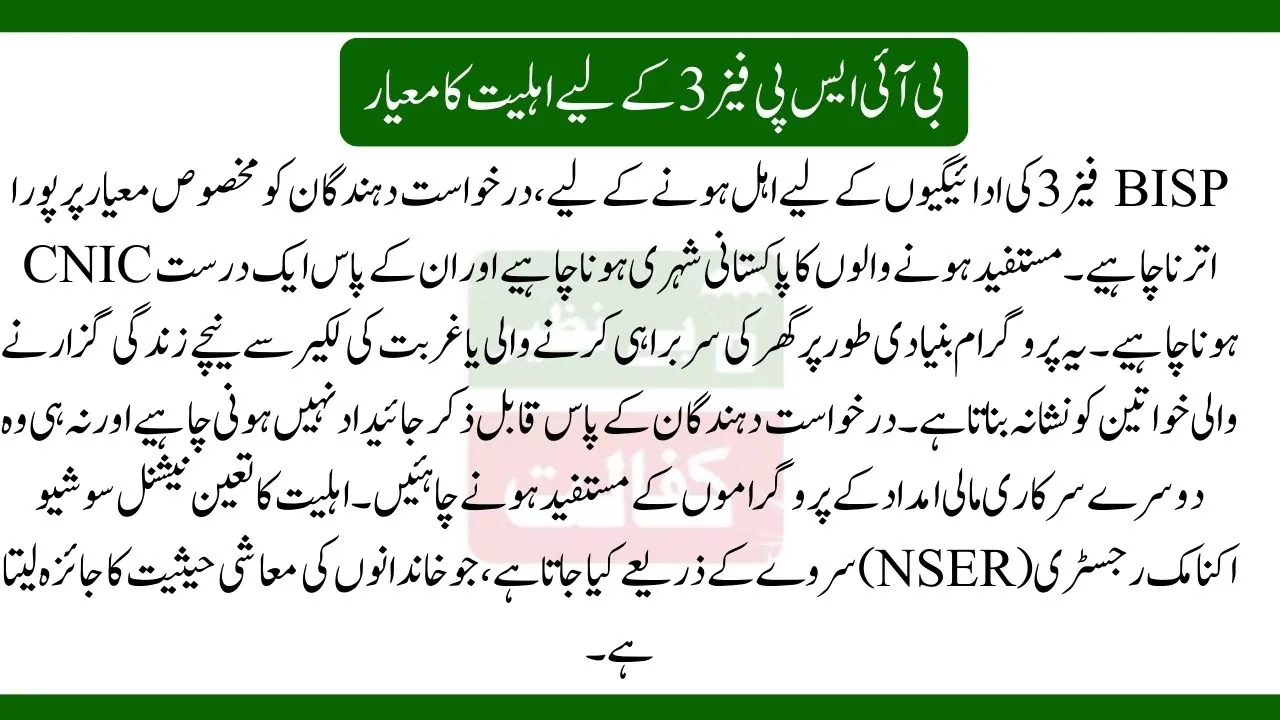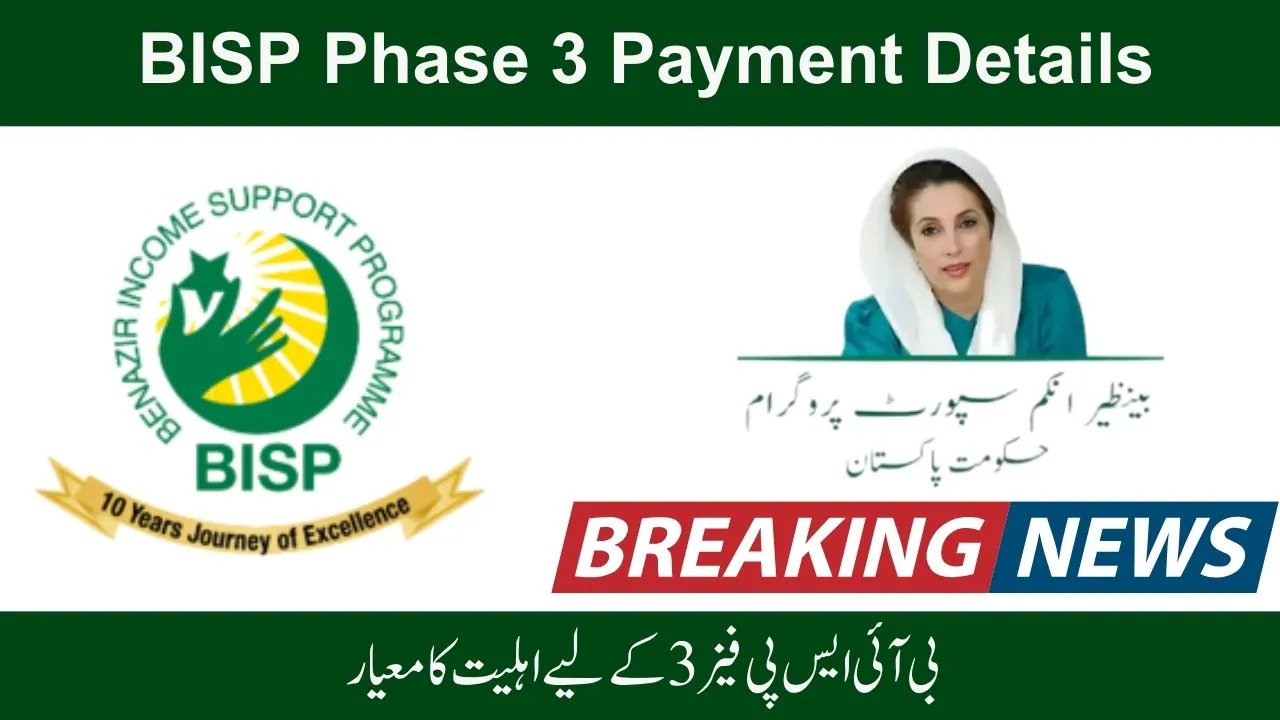The Benazir Income Support Program (BISP) is one of the largest financial aid initiatives in Pakistan. It aims to provide assistance to low-income families, particularly women, to help them meet their basic needs. Phase 3 of BISP focused on distributing payments efficiently, but some beneficiaries faced challenges such as fingerprint errors and verification failures. To address these issues, payments were also facilitated through BISP offices. With Phase 3 nearing its end, the government is preparing for Phase 4, ensuring all pending payments are resolved. This guide provides a detailed overview of Phase 3 payment details and what to expect in the next phase.
| Aspect | Details |
| Payment Amount | Rs. 10,500 per quarter (increased to Rs. 13,500 from 2025). |
| Eligibility | Low-income families, primarily women, below poverty line. |
| Collection Points | BISP offices, cash centers, and designated banks. |
| Phase 4 Start Date | January 2025, with double payments for missed disbursements. |
Eligibility Criteria for BISP Phase 3
To qualify for BISP Phase 3 payments, applicants must meet specific criteria. Beneficiaries must be Pakistani citizens and have a valid CNIC. The program primarily targets women heading households or living below the poverty line. Applicants should not own significant property or be beneficiaries of other government financial assistance programs. Eligibility is determined through the National Socio-Economic Registry (NSER) survey, which evaluates the economic status of families.

Payment Collection Process
Once approved, beneficiaries can collect their payments from designated BISP offices, cash centers, or authorized bank branches. It is essential to carry your original CNIC for verification. If any technical errors arise during collection, such as biometric mismatches, the staff at BISP offices are available to resolve these issues. Payments can also be verified through the 8171 SMS service or the BISP web portal.
Resolving Payment Issues
Beneficiaries facing issues with payments can follow specific steps to resolve them. First, check the payment status using the 8171 SMS service by sending your CNIC number. If the issue persists, visit the nearest BISP office with all relevant documents, including your CNIC and any notifications received. For those who are unregistered, the NSER survey must be completed at the BISP office to ensure eligibility for future payments.
Transition to Phase 4
As Phase 3 concludes, Phase 4 will begin in January 2025. Women who missed payments during Phase 3 will receive double payments of Rs. 27,000 to compensate for delays. Phase 4 focuses on resolving all pending issues and ensuring efficient disbursement. Unregistered women are encouraged to complete their registration process to qualify for the increased Rs. 13,500 quarterly assistance.
Conclusion
The BISP Phase 3 payments have significantly supported low-income families, despite some challenges during the distribution process. With Phase 4 on the horizon, the government aims to address pending issues and ensure no eligible beneficiary is left behind. Beneficiaries are encouraged to stay informed and utilize available resources, such as the 8171 SMS service and BISP offices, to secure their payments efficiently.
Also Read: BISP Kafalat Bank Withdrawal 2025 (Complete Update)
FAQs
What should I do if I face payment issues in 2025?
MustVisit the nearest BISP office with your original CNIC and any relevant notifications to resolve the issue.
When will Phase 4 payments begin?
Phase 4 payments are set to commence in January 2025, with increased quarterly payments of Rs. 13,500.

